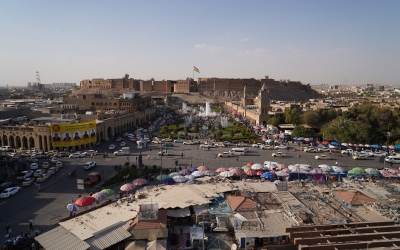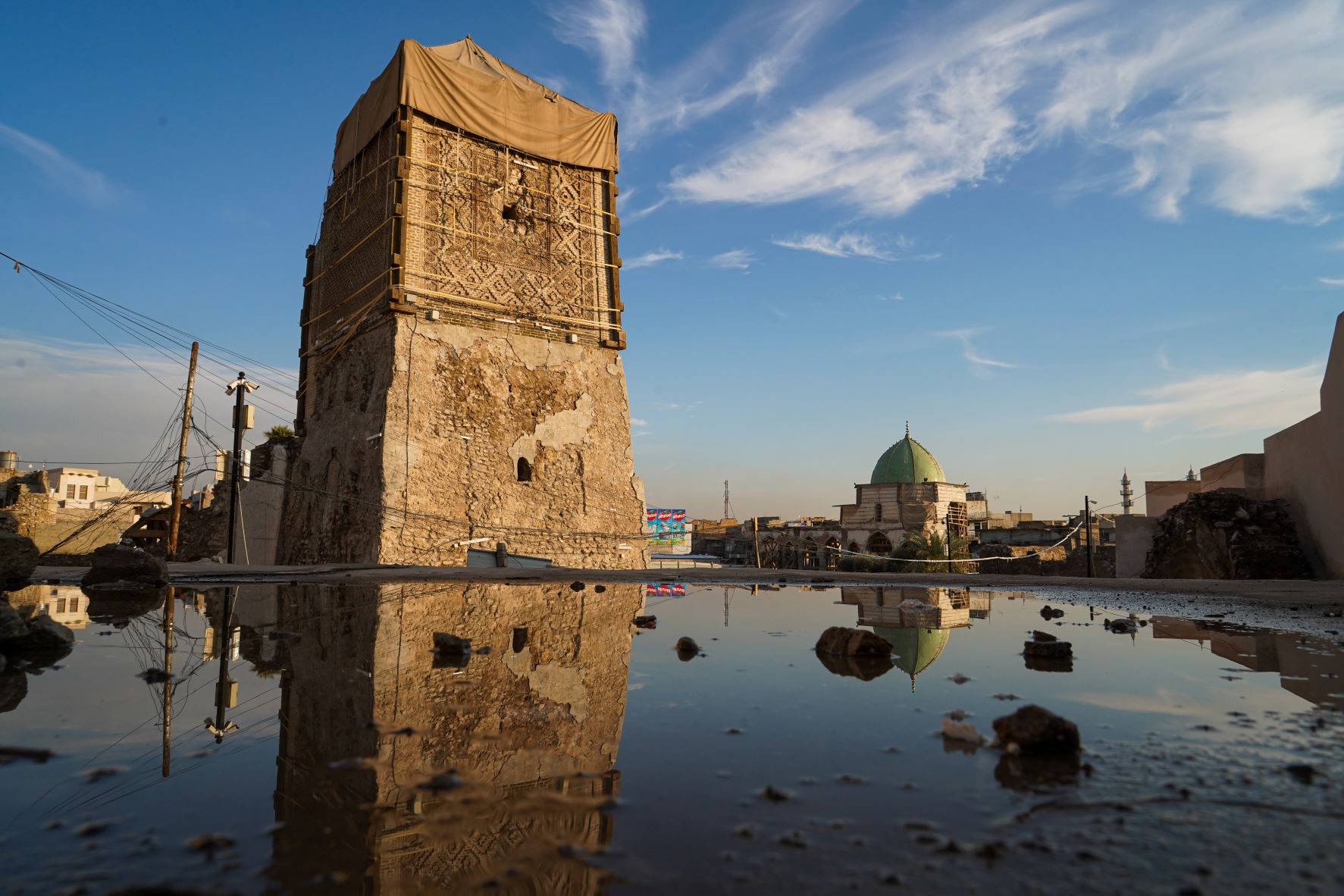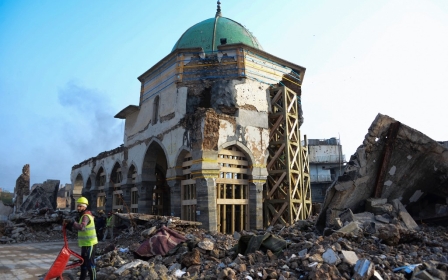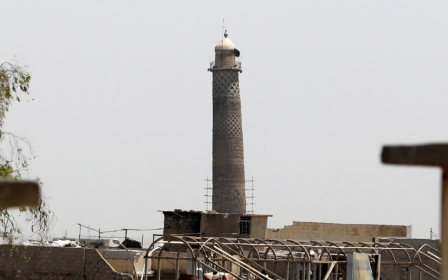Medieval prayer hall found under Mosul’s iconic al-Nuri mosque
First built in the 12th century, the al-Nuri Mosque was destroyed in 2017 by Islamic State (IS) group fighters facing imminent defeat at the hands of Iraqi troops during the Battle of Mosul.
Just under a year and a half later, efforts to rebuild the historic house of worship got underway with backing from the UAE, the Iraqi government and Unesco.
While the architectural significance of the original mosque has been permanently lost, the reconstruction effort is yielding new discoveries.
Late in January, officials in Iraq’s Nineveh Governorate announced the discovery of the al-Nuri mosque’s 12th-century prayer hall and what are believed to be ablution rooms, which were located underneath the contemporary structure.
“[The prayer hall] consists of Mosuli stone tiled regularly,” said Abdul Rahman Imad, an official within the Nineveh Antiquities and Heritage Inspectorate.
“Gaps [within the hall] indicate the presence of rooms that were used for ablution,” he added, explaining that the architectural features date back to when the mosque was first constructed more than 800 years ago.
Imad further outlined plans to preserve the discoveries from the original structure within the new mosque with the use of glass panels. The section will serve as a gallery that will be accessible to visitors.
Khair al-Din Ahmed Nasser, the director of the inspectorate, said a total of four chambers had been discovered.
“The width of one room is three and a half metres, the height is three metres and they are located six metres below ground level,” he said.
Destruction by Islamic State group
For Mosul’s residents, the discoveries represent a cautiously optimistic beginning to a new chapter in the mosque's history; a silver lining to its demise under IS group rule.
In July 2014, the mosque took on symbolic value for disciples of the group when its late leader and self-styled caliph, Abu Bakr al-Baghdadi, announced the establishment of a caliphate from its pulpit during Friday prayer sermon.
It was that symbolic value and perhaps the possibility of victorious Iraqi troops posing within its prayer hall that motivated the demolition of the mosque by IS fighters towards the climax of the Battle of Mosul in the summer of 2017.
Iraqi soldiers were said to be just 50 metres from the compound when the group detonated a series of explosions reducing the medieval structure to rubble, including its iconic leaning minaret, known as Al-Hadba (the hunchback).
"When I saw the condition of the al-Hadba minaret and the mosque after they were destroyed, I felt that I had lost one of my sons,” said Saadallah Taha, a Mosul resident.
“We were greatly affected when the mosque was bombed…as it is the symbol of Mosul and its identity."
Ayoob Thanoon, a civil society activist from Mosul, said the restoration of the mosque in its original form was an important step in restoring the city’s “social fabric”.
“The archaeological and religious diversity that exists in this area and the cultural heritage that Old Mosul holds is very important,” he said.
“It is very important to reconstruct these sites…and rebuild them in their old form.”
A long history
The al-Nuri mosque takes its name from the Turkic warrior Nur al-Din Zengi, who presided over territories that covered large parts of Iraq and Syria, and commissioned the building of the mosque in 1172 CE.
Zengi is famous for his role in reversing Crusader gains in Palestine and the nephew of one of his officers, the Kurdish general Saladin, would take on the mantle of the fight against the invaders, later securing the capture of Jerusalem for Muslim forces.
According to Iraqi officials, the mosque’s original prayer halls were lost and forgotten after renovation work that took place in 1944.
The IS group’s defeat in 2017 was the armed movement's effective last stand against a coalition of forces led by the Iraqi army and its allied militias.
Baghdadi died detonating his suicide vest during a US operation to capture or kill him in Syria’s Idlib province in October 2019.
Middle East Eye delivers independent and unrivalled coverage and analysis of the Middle East, North Africa and beyond. To learn more about republishing this content and the associated fees, please fill out this form. More about MEE can be found here.






